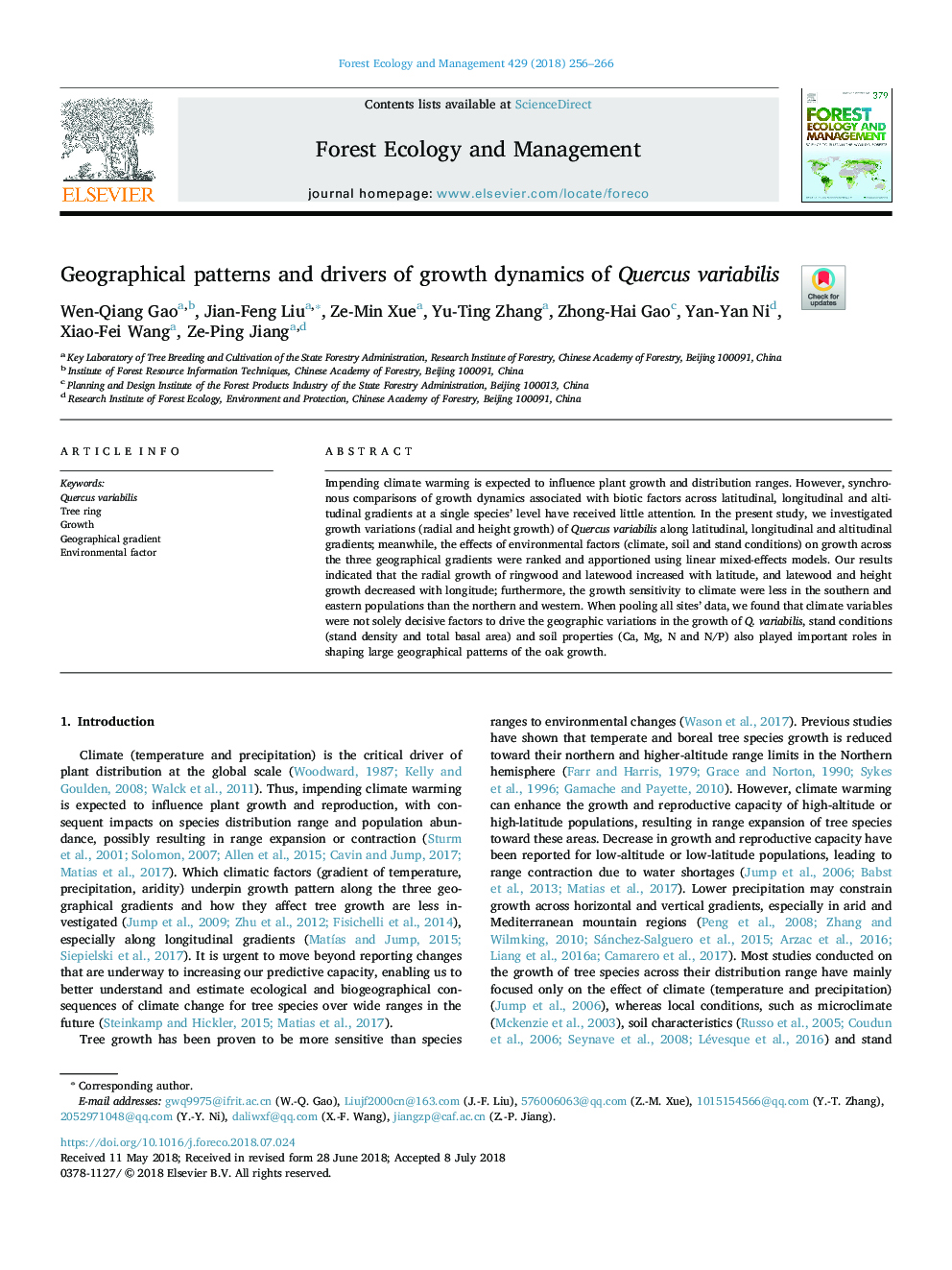| Article ID | Journal | Published Year | Pages | File Type |
|---|---|---|---|---|
| 6541438 | Forest Ecology and Management | 2018 | 11 Pages |
Abstract
Impending climate warming is expected to influence plant growth and distribution ranges. However, synchronous comparisons of growth dynamics associated with biotic factors across latitudinal, longitudinal and altitudinal gradients at a single species' level have received little attention. In the present study, we investigated growth variations (radial and height growth) of Quercus variabilis along latitudinal, longitudinal and altitudinal gradients; meanwhile, the effects of environmental factors (climate, soil and stand conditions) on growth across the three geographical gradients were ranked and apportioned using linear mixed-effects models. Our results indicated that the radial growth of ringwood and latewood increased with latitude, and latewood and height growth decreased with longitude; furthermore, the growth sensitivity to climate were less in the southern and eastern populations than the northern and western. When pooling all sites' data, we found that climate variables were not solely decisive factors to drive the geographic variations in the growth of Q. variabilis, stand conditions (stand density and total basal area) and soil properties (Ca, Mg, N and N/P) also played important roles in shaping large geographical patterns of the oak growth.
Related Topics
Life Sciences
Agricultural and Biological Sciences
Ecology, Evolution, Behavior and Systematics
Authors
Wen-Qiang Gao, Jian-Feng Liu, Ze-Min Xue, Yu-Ting Zhang, Zhong-Hai Gao, Yan-Yan Ni, Xiao-Fei Wang, Ze-Ping Jiang,
